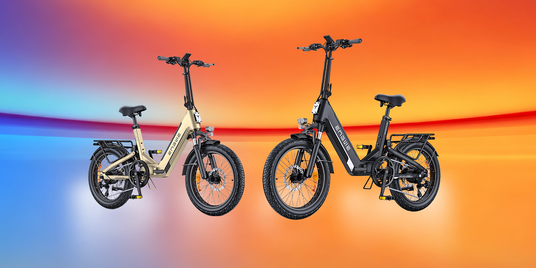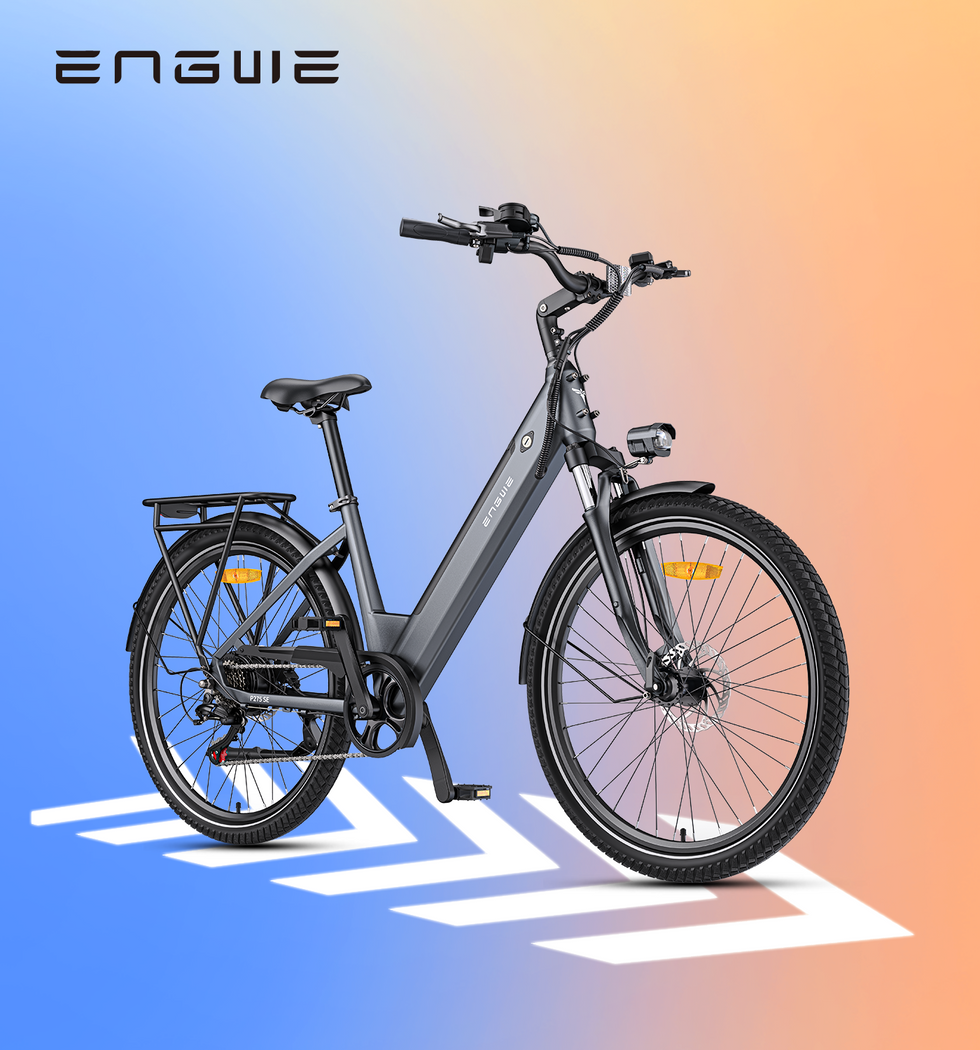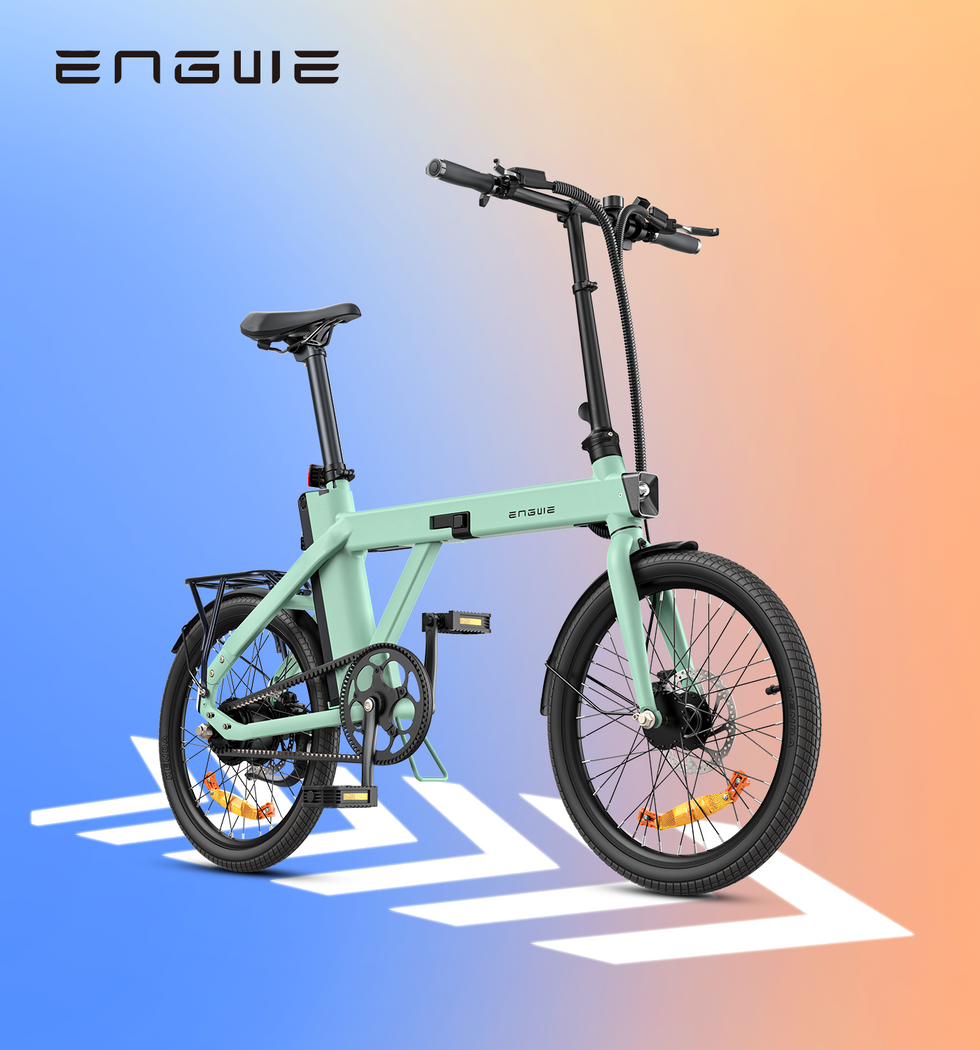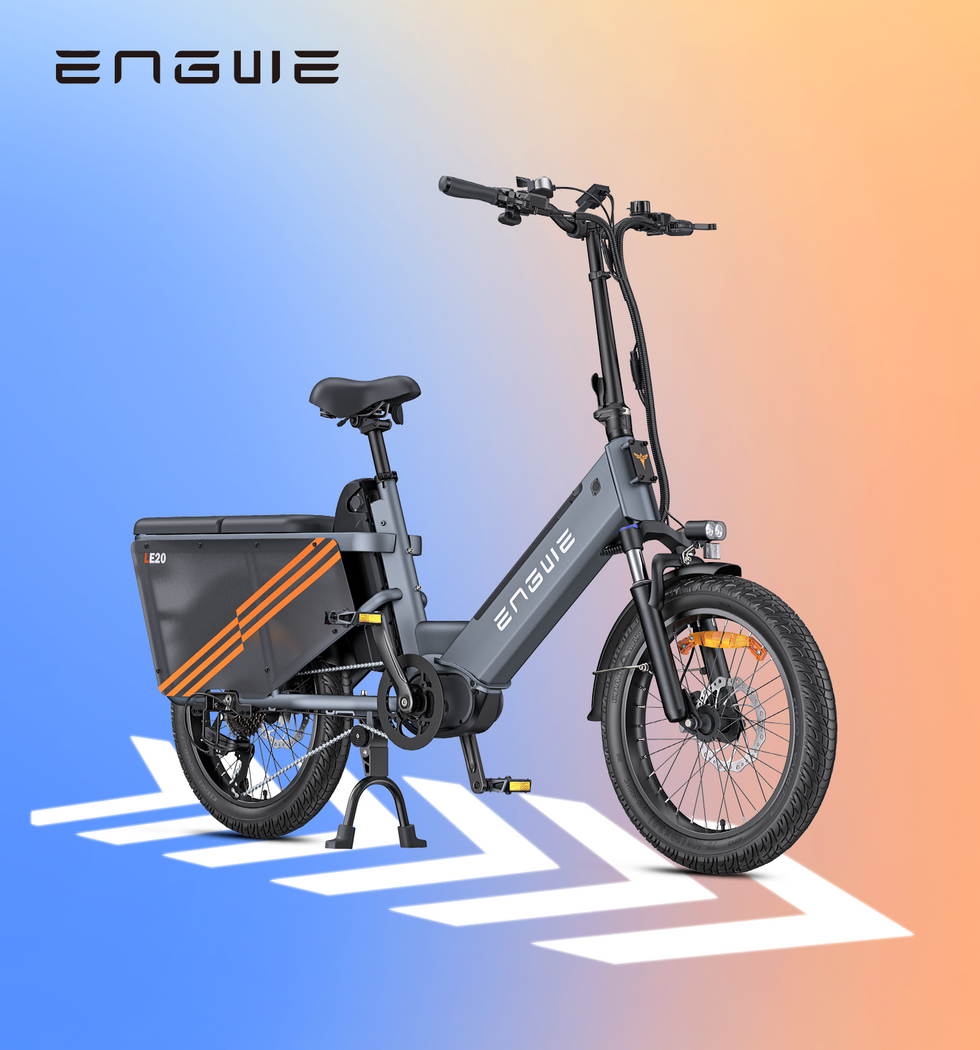An electric bike is a great investment for your freedom and lifestyle. So, you need the right size e-bike that makes your rides comfortable and enjoyable.
Choosing the wrong size can lead to loss of balance, falls, and physical discomfort, including backaches, neck pain, and painful joints. Riding such a bike often feels more like a regretful purchase rather than an exciting daily experience.
On top of that, because e-bikes are heavier, choosing the proper size matters even more than traditional bicycles.
With a well-sized and the right fit e-bike, you enjoy:
-
Comfort as your body naturally aligns with the configuration of pedals and handlebars.
-
Control: Improved handling, especially at faster e-bike speeds.
-
Safety: Lower to no chance of strain or injury.
Another best part? You don’t need a professional advisor to size your e-bike correctly. Just a tape measure and a few simple calculations (given below), and you can do it yourself.
Step 1: Measure Your Inseam Height

Your inseam is the distance from your crotch to the floor. We recommend calculating this measurement without shoes or loose clothing—in cycling shorts or underwear.
Here’s how to get it right:
-
Stand against a wall with feet 6–8 inches apart. Make sure your shoulders, buttocks, calves, and heels touch the wall.
-
Place a book as high as possible between your legs with its flat side parallel to the floor.
-
Measure from the floor to the top of the book (as shown in the image above).
That resulting number is your inseam in centimeters.
Inseam calculation is the first step because it determines the bike’s frame size and saddle height.
Step 2: Finding the Right Frame Size
Use inseam measurements for calculating your e-bike’s frame size. The formulas are:
|
Road/hybrid e-bike |
Mountain e-bike |
|
|
Formula |
Frame size (cm) = Inseam × 0.65 |
Frame size (cm) = Inseam × 0.57 |
|
Example with inseam = 78 cm: |
78 × 0.65 = 50.7 cm frame |
78 × 0.57 = 44.5 cm frame |
To measure in inches, simply divide the result by 2.54.
Step 3: Match with Brand’s Size Charts
In this step, you have to match the frame size with the sizing chart used by e-bike brands. The sizing chart typically uses alpha sizing (S, M, L, XL) or CM/IN sizing.
Something like this size chart below:
Reference Size Chart (By Height) |
||
|---|---|---|
|
Rider Height |
Road/Hybrid E-Bike |
Mountain E-Bike |
|
5’0″–5’3″ (152–160 cm) |
48–50 cm (XS) |
14–15″ |
|
5’4″–5’7″ (161–170 cm) |
50–52 cm (S) |
16–17″ |
|
5’8″–5’11″ (171–180 cm) |
54–56 cm (M) |
18–19″ |
|
6’0″–6’2″ (181–188 cm) |
56–58 cm (L) |
19–20″ |
|
6’3″+ (189+ cm) |
60+ cm (XL) |
21–23″ |
Take, for example, the ENGWE EP‑2 Boost, a foldable all-terrain e-bike that is fit for riders between 165–190 cm (5′4″–6′2″). The e-bike features an adjustable saddle of 84–102 cm and handlebars from 118–130 cm. So, if your inseam-based calculation is a 50–55 cm frame, EP‑2 Boost may be the ideal model for you.

But that is not all! To truly find the right size for your e-bike, you must understand bike geometry. The geometry of an e-bike strongly affects the handling, comfort, and aerodynamics you experience with it.
Step 4: Bike Geometry

Specifically, bike geometry gives you the numbers describing how the e-bike feels while riding. The most important and common terms for bike geometry are:
Top Tube Length: Measured from head tube size to seat tube axis, top tube length indicates the overall size and how far forward you lean. The longer the top tube, the more the stretch and the more aerodynamic the position on the road bike. A top tube that is too short results in a cramped posture. Ideally, choose something in between—not too long and not too short.
Seat Tube Length: The seat tube is the vertical pipe that holds the seat post and saddle. So, seat tube length is how tall that pipe is—measuring from the bottom bracket to the top of the tube. This is an important measurement when calculating the overall frame size.
Seat Tube Angle: Most e-bikes feature a seat tube angle of between 72° and 75°. The angle matters because steeper angles give a sporty look, while relaxed angles keep you comfortable in an upright pose.
Head Tube Length: The taller the head tube, the closer the handlebars are to your body, and the more raised your hand position is. We recommend choosing a frame with the headtube length matching your measurements.
Reach: Horizontal distance from the bottom bracket to the head tube.
Longer reach = stretched posture
Shorter reach = relaxed posture
Stack: Vertical distance from the bottom bracket to the head tube.
Higher stack = upright comfort
Lower stack = aggressive fit.
Commuters usually choose bikes with a higher stack and shorter reach, while performance riders often prefer the opposite.
Step 5: Wheel Size
Bikes with smaller tyres feel lightweight while larger tyres make it feel more stable. For e-bikes, wheel size typically ranges between 20-29 inches.
The table below shows the wheel size for different inseam calculations:
|
Inseam |
Wheel Size (CM) |
|
22” - 25” |
51 |
|
24” - 28” |
60 |
|
25” - 30” |
66 |
|
28” - 34” |
74 |
The Final Step: The Stand-Over Height Test
This is the easiest way to test if the frame fits.
-
Straddle the e-ike with both feet flat on the ground.
-
There should be space between your crotch and the top tube: Road/Hybrid → 1–2 cm / Mountain → 5–7 cm.
If the frame presses against you, the e-bike is too big for you.
Don’t Forget Your Riding Style
Finally, answer this: How do you use the e-bike?
-
City commuters need medium frames with upright geometry.
-
Long-distance touring requires larger frames with relaxed geometry.
-
Mountain biking requires smaller, more maneuverable e-bike frames.
With the method explained above, you’ll find an e-bike that feels comfortable on short commutes a nd powerful on long rides. So, before buying, grab a tape measure to find the best size for your e-bike.



